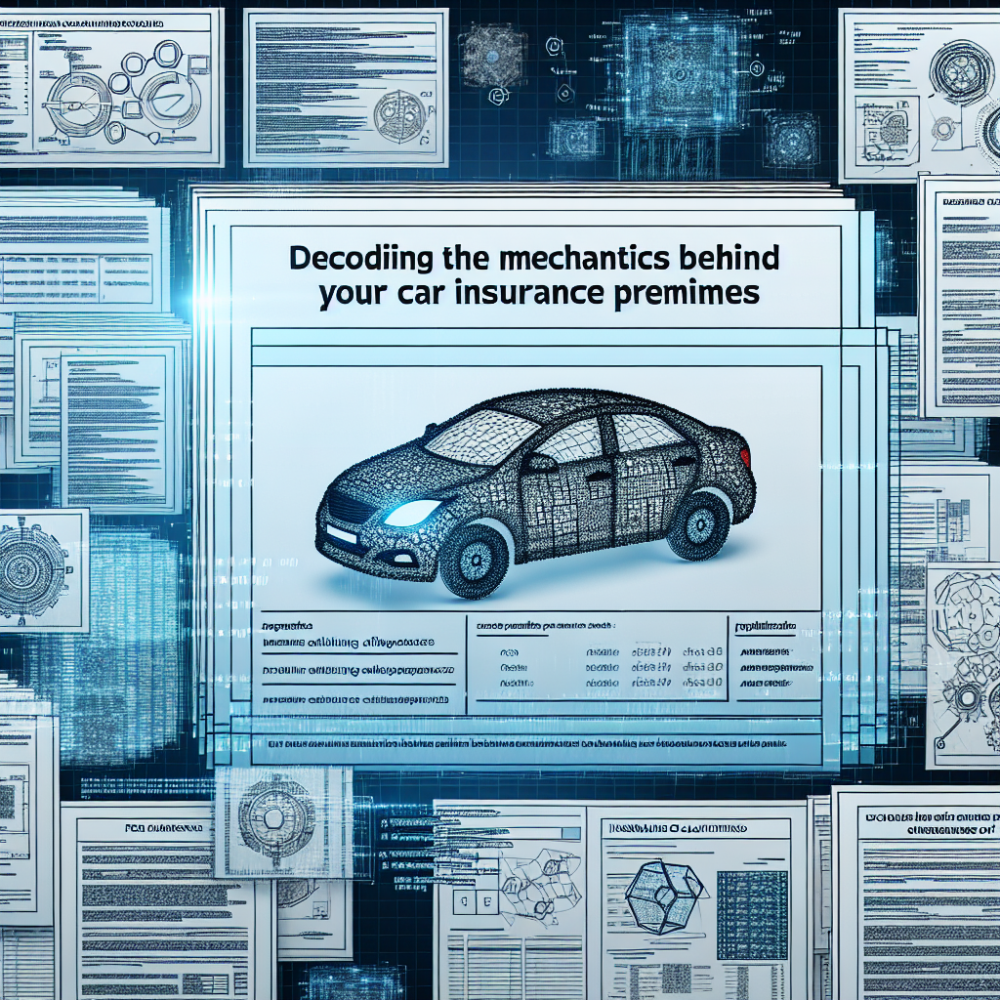Decoding the Mechanics Behind Your Car Insurance Premiums

Posted on: Saturday, March 2nd, 2024
In the current landscape of car insurance, sophisticated algorithms play a pivotal role in determining the rate you pay. These algorithms take into account a multitude of factors, from driving history to personal demographics, to accurately assess risk and set premiums accordingly. Technological advancements and data analytics have significantly refined these processes, making them more intricate than ever before. Understanding the core elements these algorithms evaluate can empower consumers to make informed decisions about their car insurance.
At the heart of car insurance rate algorithms lies the principle of risk assessment. Insurance companies utilize vast amounts of data to predict the likelihood of an individual filing a claim. Factors such as age, gender, driving record, and the type of vehicle driven are standard in almost every algorithm. However, emerging factors like credit score, location, and even marital status now play a crucial role in this complex calculation.
Technological integration has brought about a new era of personalized insurance premiums. Telematics, or usage-based insurance, uses real-time driving data collected from the vehicle to tailor rates more closely to the driver's behavior. This can significantly benefit safe drivers with lower premiums but also means that risky driving habits are more directly penalized. As technology evolves, these algorithms become increasingly dynamic, able to adjust premiums based on ongoing behavior rather than relying solely on historical data.
Legislation and regulation also significantly influence the development and application of car insurance rate algorithms. Different states have different laws governing what insurers can and cannot consider when calculating rates. For instance, some states prohibit the use of credit scores in these algorithms. Such regulatory environments ensure that the development of these algorithms is in line with societal values and fairness.
The future of car insurance algorithms looks to incorporate even more personalized and real-time data. Advancements in artificial intelligence and machine learning are paving the way for algorithms that can adapt and learn from new data, potentially offering even more precisely tailored rates. This could include factors like weather conditions, road traffic, and even social media activity. As these technologies mature, the balance between risk assessment accuracy and privacy considerations will continue to be a focal point for both insurers and policyholders.
In conclusion, car insurance rate algorithms are a blend of traditional risk assessment techniques and cutting-edge technology. By understanding the factors that influence these algorithms, consumers can take steps to positively impact their insurance premiums. As the field evolves, staying informed about these changes will be crucial for anyone looking to optimize their car insurance expenses. It's a dynamic interplay of data, technology, and regulation, all aimed at quantifying risk and offering fair premiums to drivers.